Explore the latest news and find out what's on this month
Explore our learning offer for schools, families and community groups
Uncover the rich history of Elmbridge with our latest online exhibitions
Want to discover more about your local area?
Explore the latest news and find out what's on this month
Explore our learning offer for schools, families and community groups
Uncover the rich history of Elmbridge with our latest online exhibitions
Want to discover more about your local area?
So reported the Cobham News and Mail in December 1979. The three main emergency services — Police, Fire, and Ambulance — are continually developing, and work to save the lives of individuals in need on a daily basis. This exhibition, originally developed to mark Emergency Services Day each September, explores the history and stories of the emergency services within Elmbridge and their impact on local communities.
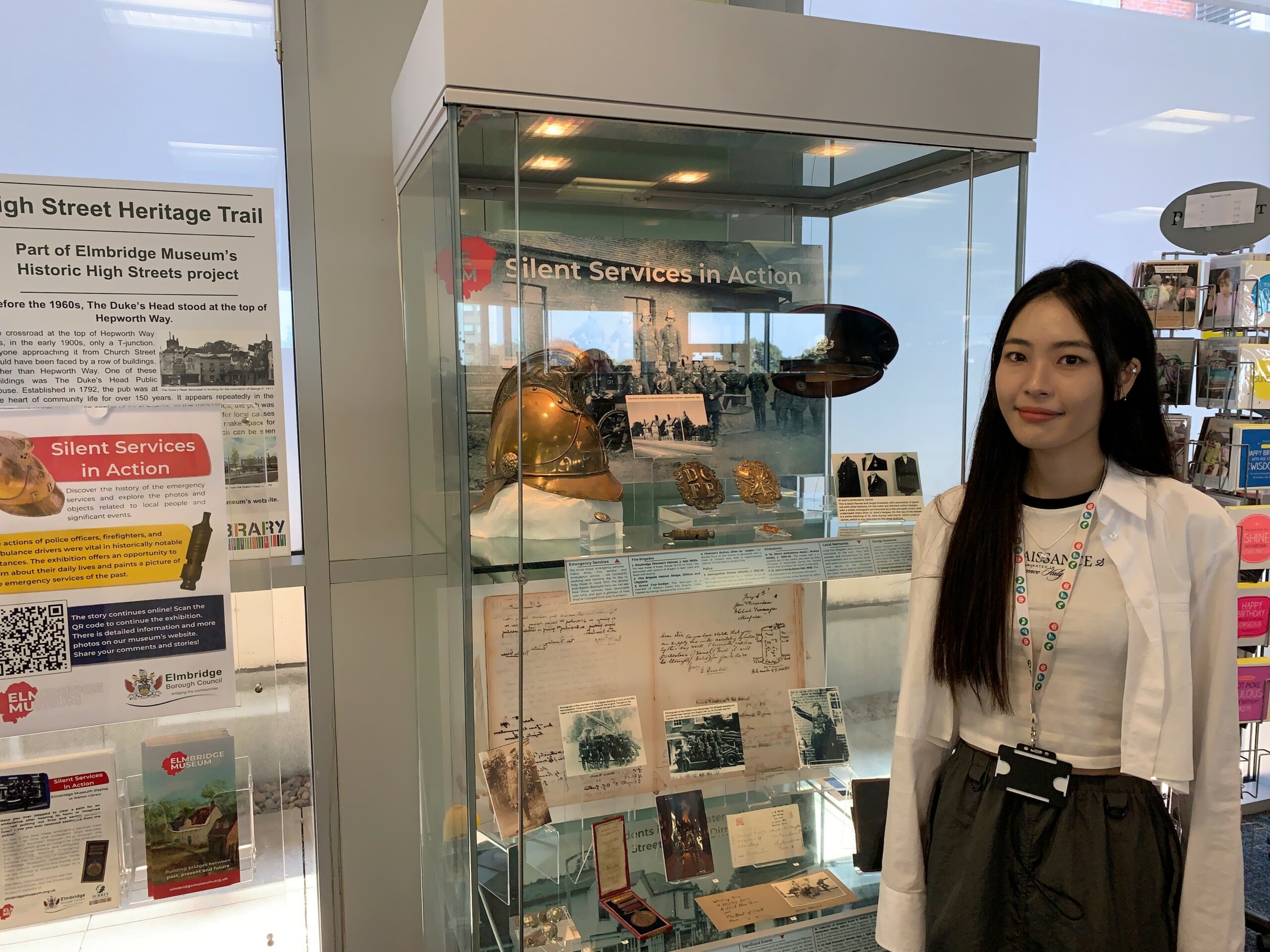 Anita next to her 'Silent Services in Action' exhibition, September 2023.
Anita next to her 'Silent Services in Action' exhibition, September 2023.
I am currently studying for a Masters in Art Museum and Gallery Studies at the University of Leicester. I am interested in how to curate an exhibition and all other aspects of the museum sector. I consider museums to be a magical place that can bring objects to life, and even bring visitors on a time travel journey. I want to create this unique feelings for others.
During the summer, I started an exciting placement in Exhibitions and Interpretation at Elmbridge Museum, and have been working on the “Silent Services in Action” exhibition. I researched the emergency services extensively, in relation to the local area. Furthermore, I have been searching through the collections database for objects that connect to this theme, and build up the narratives in order to put them on display. I enjoyed the fantastic experience of observing the museum’s collection and finding out stories connected to local people. I hope this exhibition can spark your interest and give you an insight into the history and evolution of the emergency services in Elmbridge.
This online exhibition also corresponds to a physical display at Walton Library. To have a thorough understanding of the theme, we invite you to visit and see more items from our collection, and go through this online exhibition to gain a deeper insight. I hope you will enjoy it!
How to visit the displayLocal volunteers founded the first police force in the 18th century, with the responsibility of securing the neighbourhood. The Metropolitan Police was founded in 1829 and initially covered all of London, including areas within what is now the Surrey County boundary. After that, the Surrey Constabulary, subsequently known as the Surrey Police, was created as a single, unitary police organisation on 1 January 1851.
It is difficult to pinpoint exactly when Elmbridge’s fire services began, but following the Great Fire of London in 1666, people all over the nation became more concerned about this issue, and made decisions to take action in order to prevent and safeguard their hometowns. Before the 1820s, local volunteers and private insurance companies were in charge of battling fires, much like the UK police forces in the past. The Metropolitan Fire Brigade was a public service that the government established in 1866. During the Second World War the fire service underwent significant reform, and control of the fire department was given to the County Council and Borough Councils. It was at this time that the Surrey Fire Brigade was established.
The ambulance service, which can be traced back to the 11th century and was used to provide medical care for soldiers, as well as for the poor and the sick and injured, can be regarded as the oldest of all the services. However, the modern ambulance service did not begin until the late 19th century. The National Health Service was established on 5 July 1948, however there were no national regulations at the time. This change occurred in 1973 and gave the NHS power over all ambulance services which were previously under the local authorities.

The emergency services have a long history dating back to their inception. Various legislation has been passed over the years to mould the services into the modern ones we see today. This is an overview of some significant dates of the emergency services related to Elmbridge's local areas.
The start of Walton Fire Brigade. This image is a drawing of the Fire Station on Walton High Street.
Dittons and Claygate Fire Brigade was set up. This is a cap or helmet badge in moulded brass formerly belonging to a member of the Dittons and Claygate Fire Brigade. The badge carries the letters D. C. F. B. within a foliate border.
The Hurst Park fire, started by Kitty Marion and and Clara Giveen as part of the fight for women's right to vote. The fire was put out in a massive effort from local fire services.
The combination of Walton and Weybridge Fire Brigade. This photo shows the members standing outside Elm Grove.
The National Fire Service was created during the Second World War. This is a photo of Walton & Weybridge National Fire Service.
The demolition of Mount Felix in Walton-on-Thames, after a severe fire in 1966.
The Great Flood, which badly damaged many areas in Surrey. The photo shows residents in the flood water in the Village High Street, Thames Ditton.
The Metropolitan Mounted Police was formed. This is an image of a police officer on a horse at Imber Court.
A new fire station opened in Esher.
The Great Storm happened on 15-16th October. It seriously damaged a lot of places in the United Kingdom and France, including a lot of local areas in Elmbridge.
The closure of Molesey and Cobham police station, which caused strong public backlash. This image shows firemen from East Molesey Fire Brigade standing outside their original fire station, photographed in 1987.
The Surrey Police took control of policing in Esher, Cobham, Molesey, The Dittons, Hinchley Wood, Claygate and Oxshott.
 The Walton & Weybridge Fire Brigade in 1921 with their new Dennis motor tender and old Shand Mason steam engine, posed outside Elm Grove under their Chief Officer, Ralph Wilds.
The Walton & Weybridge Fire Brigade in 1921 with their new Dennis motor tender and old Shand Mason steam engine, posed outside Elm Grove under their Chief Officer, Ralph Wilds.
Do you know how the Fire Brigades changed in the past? The Fire Brigades we know today have undergone significant alterations over the years.
In the early 20th century, the primary groups assisting locals to lessen the impact of fire incidents were private insurance firms and local fire brigades, which were formed by part-time volunteers.
The National Fire Service (NFS) was converted to the Auxiliary Fire Service (AFS) during the Second World War and around 1600 local authority fire brigades came into existence from August 1941. At this point, the entire central government was in charge of local governance.
The Fire Service Act was then passed and the Surrey Fire Brigade was founded in 1947. The NFS and AFS were abolished, and the County and Borough were once again in charge.
The present day Fire Brigade in Surrey is ‘Surrey Fire and Rescue Service’, under the authority of Surrey County Council. There are 25 fire stations around the borough, each with a range of vehicles and equipment at their disposal.
The fire service relied almost entirely on part-time fire fighters to deal with emergencies. Part-timers had a vital role to play. They were instrumental in supporting and serving the community. A part-time fire fighter had to successfully complete rigorous physical and medical exams as well as fire training programmes in order to be prepared and deemed fit for duty.
One of their toughest challenges was possibly working right around the clock. When an emergency call was received, the firemen had to drop everything and head to the station immediately. After they received a call, they had to be out of the station within five minutes. For them, learning to live on call with various situations arising was never an easy task.
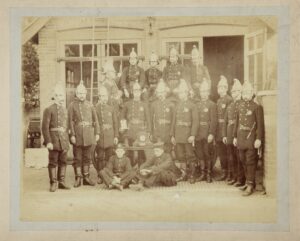
Photograph of Weybridge Fire Brigade grouped on and around the 1879 Fire Engine outside the main doors of fire station in 1880s or early 1890s. There are five men on the engine, ten men standing in front, two boys sitting on the ground, and a small table with trophies on it in the centre of the group.
The “Call Boys”
When firemen were all part-timers, they did have other jobs. When an emergency was raised, the duty of the “call boys” was to locate and inform the firemen. This meant knowing where every fireman worked or would be from day to day – no easy task! The importance of the call boys cannot be underestimated.
In the two group photos, we can see call boys sitting at the front.
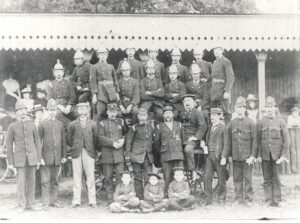
Photograph of the Weybridge Fire Brigade grouped on and around a fire engine c.1878-79. There are 16 men in fire brigade uniform and 3 call boys seated cross-legged on the ground, in front.
Conversation with Mr Cyril Gentry
Mr. Cyril Gentry joined the Weybridge Fire Brigade in 1927 when he was 18.
“The fire brigade dinners were good fun. Naughty tales were told. This used to be at the Newcastle Arms. The Walton one used to be at The Plough. There was a great deal of friendship amongst the Brigades. They all knew each other.”
Gilbert Thorn joined the Weybridge Fire Brigade as a young man in the 1870s. He also worked at the Weybridge Urban Electric Supply Company in 1901, spending his spare time with the Fire Brigade. By the 1920s Mr Gilbert Thorn had risen to become the Third Officer of the Weybridge Brigade. Although his uniform does not survive, the Museum has his boots, epaulette and the medals he earned during his years as a fireman.
Learn more about Gilbert Thorn’s photos and belongings in the video!
George Dunstone was a founder member of the Dittons and Claygate Fire Brigade, which was set up in 1882. He was also a builder and decorator in Weston Green. The museum holds some photographs and items that belonged to him, which were donated by Jo Dunstone, his great grandchild. Through the family photos, we can understand more about this man and his life at the past.
Discover more of George Dunstone’s life from the photos and objects in the video!
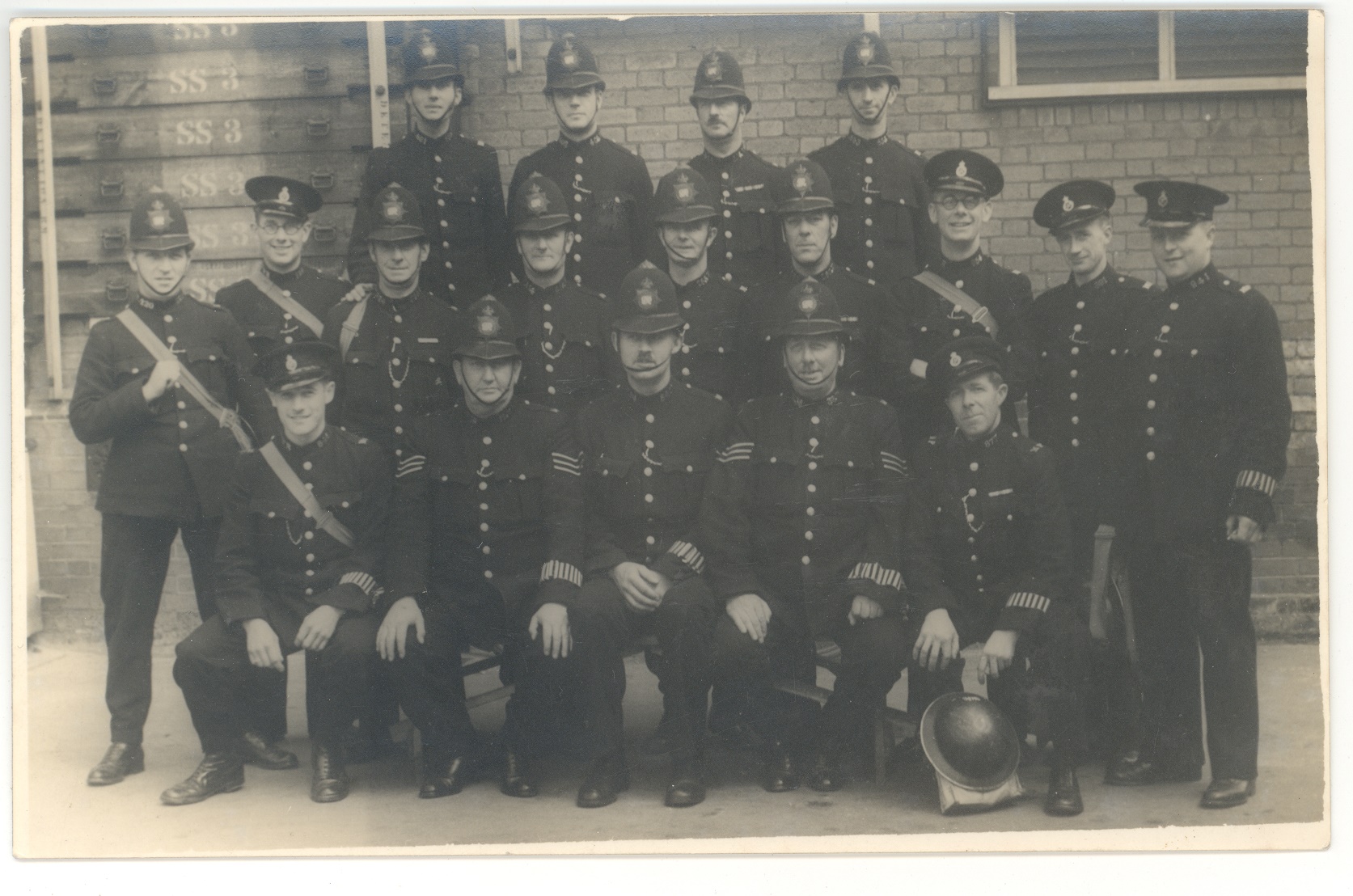 Postcard image of 18 uniformed policemen, Thames Ditton, 1939.
Postcard image of 18 uniformed policemen, Thames Ditton, 1939.
On 1st January 1851, a single, integrated police force called the Surrey Constabulary was formed. There were 70 police officers there at the time.
The Surrey Constabulary was based at the old Guildford Borough Police Station at Corn Market House until the new headquarters in Woodbridge Road were finished in 1854. Following the Second World War the county force expanded, quickly necessitating a more adequate base. Finally, Mount Browne in Sandy Lane, Guildford, was bought and transformed into the new administrative centre in 1948.
The Force has endured various mergers, secessions, reorganisations, and boundary changes over time. The Surrey Police was re-named in 1993. Currently, Surrey Police services 1.19 million people in 11 boroughs across an area of 1,033 km.
The Surrey Constabulary underwater section was formed in 1962, one of the oldest in the country. In Surrey, the diving team was busy. They had to be ready day and night to search in the dangerous environment of the rivers, lakes, and gravel pits, in the pursuit of suicides, murder victims, dumped stolen property and crashed vehicles. This was a difficult and unusual job because of the water conditions. Since not every county police force had an underwater section, the Surrey team would often be called in to help the other forces.
Sometimes they did have thrilling surprise findings, such as coins from the early 1800s, and a 15th century ice bucket which was later sent to London.
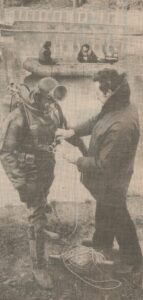
An image of PC George Dobson preparing for a training dive in the Thames at Walton. PC Barry Adams is helping him. C.1960s-70s.
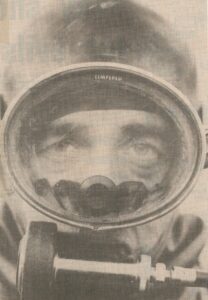
An image of PC George Dobson of the police diving team, c.1960s-70s

Headline of a newspaper cutting, c.1960s-70s.
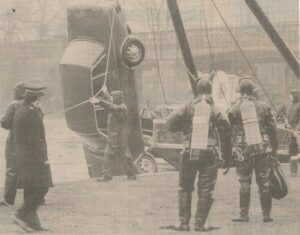
An image of a car in which a man and a woman died being lifted from the Thames at Walton, while the police diving team watched, c.1960s-70s.
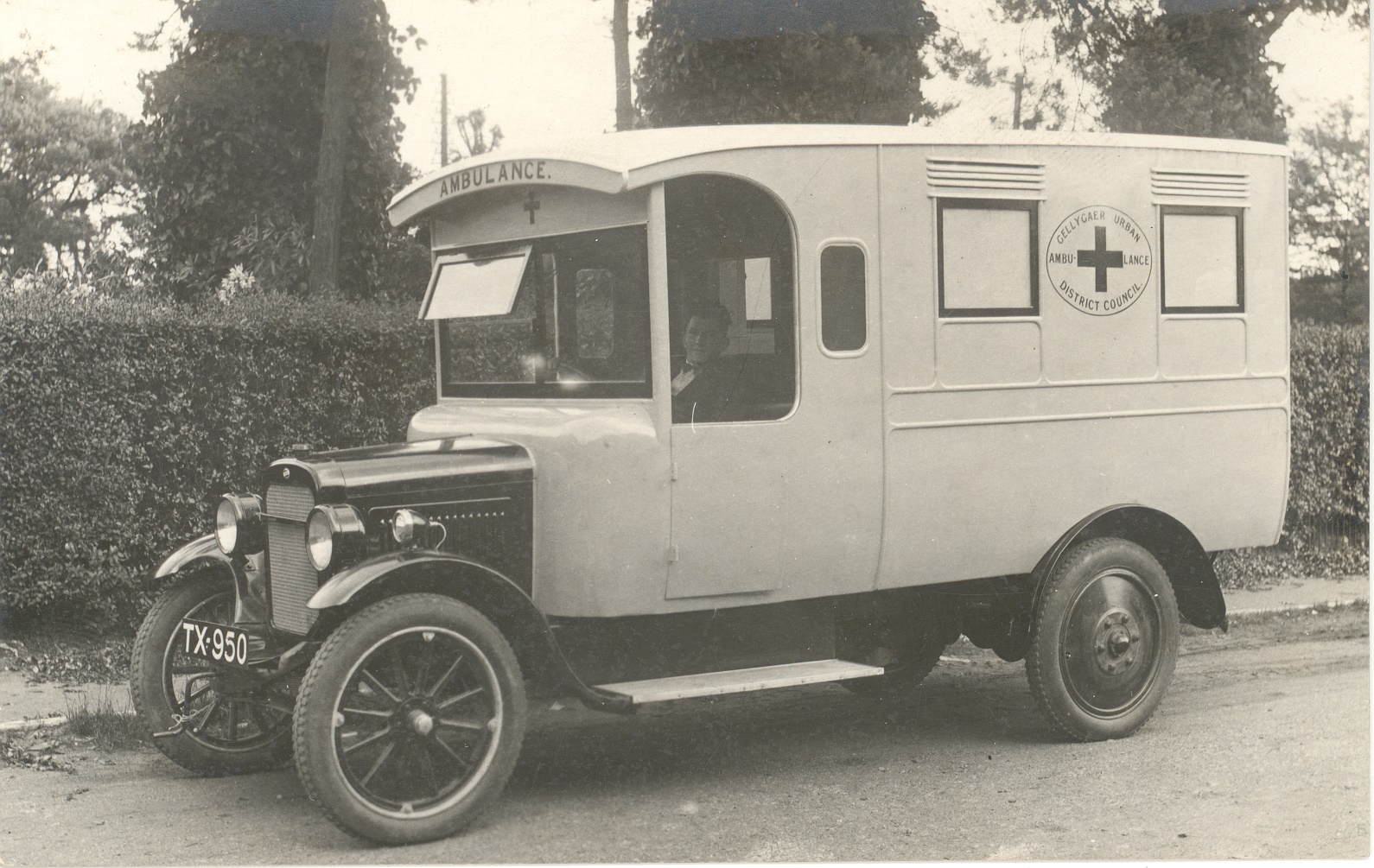 Black and white postcard of the outside of an Ambulance, registration no. TX 950 1928. On side of ambulance states Gellygaer Urban District Council Ambulance.
Black and white postcard of the outside of an Ambulance, registration no. TX 950 1928. On side of ambulance states Gellygaer Urban District Council Ambulance.
The Surrey Ambulance Service was under the National Health Service (NHS) until 1 July 2006, when it was succeeded by the South East Coast Ambulance Service. Although there is a long history of ambulance services, it could also be seen as the youngest service when compared to other emergency services.
In 1882, before the NHS was established, the St. John’s Ambulance Association was introduced, which then became St John’s Ambulance Brigade in 1887. During the First World War, motor ambulances were provided to the front lines by the British Red Cross and the government started to plan for the national ambulance service. In 1937, the 999 telephone number was introduced after an incident in 1935.
The NHS finally came into being on 5 July 1948. In 1973, the NHS Reorganisation Act was conducted and transferred control of the ambulance service from local authorities to the NHS. This decision was controversial because it reduced the overall number of ambulance services in operation.
The 1980s was considered a significant period for the ambulance service, with a number of improvements creating a significant impact – for example, the modernisation of communication systems, the introduction of helicopters and motorcycles to speed up response times and the introduction of portable defibrillators.
The motor ambulance was recognized as the most efficient means of transport for accident and emergency cases when it first came out. The powerful engine enabled it to cover the journey and get to people in need quickly.
Starting from the end of the year in 1927, Walton-on-Thames Urban District Council wanted to procure a new motor ambulance. The Council sought marketing material from a range of suppliers to consider which specification would best suit its needs. In the end, the new vehicles were purchased from a local company, R.W.H Marris Commercial Cars Ltd.
This advertises the various types of vehicle which could be bought from Crossley Motors Ltd. It includes images of a tender or delivery van, a light lorry, and and ambulance, with prices ranging from £275 - £295. The leaflet came with a letter dated 1928.
The sales leaflet boasts that 'the Motor Ambulance is recognised as the most efficient means of transport for sick or accident cases, and its adoption for public service is now almost general throughout the country.' The Crossley Motors ambulance was fitted inside with 2 stretchers on patent fittings, blankets, water bottles and glasses, a mahogany cabinet stocked with bandages, a water tank and basin, and an attendants' seat with a communication flap through to the driver. The leaflet came with a letter dated 1928.
This blue print for the Special Ambulance was produced by Morris Commercial Cars Ltd., Birmingham, in February 1928. It illustrates, with dimensions, the chassis and body from the side, above, and with the doors open and closed at the rear.
This blueprint originally came with a letter to Walton Urban District Council from Marris Automobile Engineers, based near Walton Bridge, advising that a Morris Commercial Cars had permitted a 5% discount on the purchase of the Morris Motor Ambulance depicted in the blueprint.
Here you can view and download the original transcribed correspondence between Walton Urban District Council and two different companies about acquiring a new ambulance in 1928.
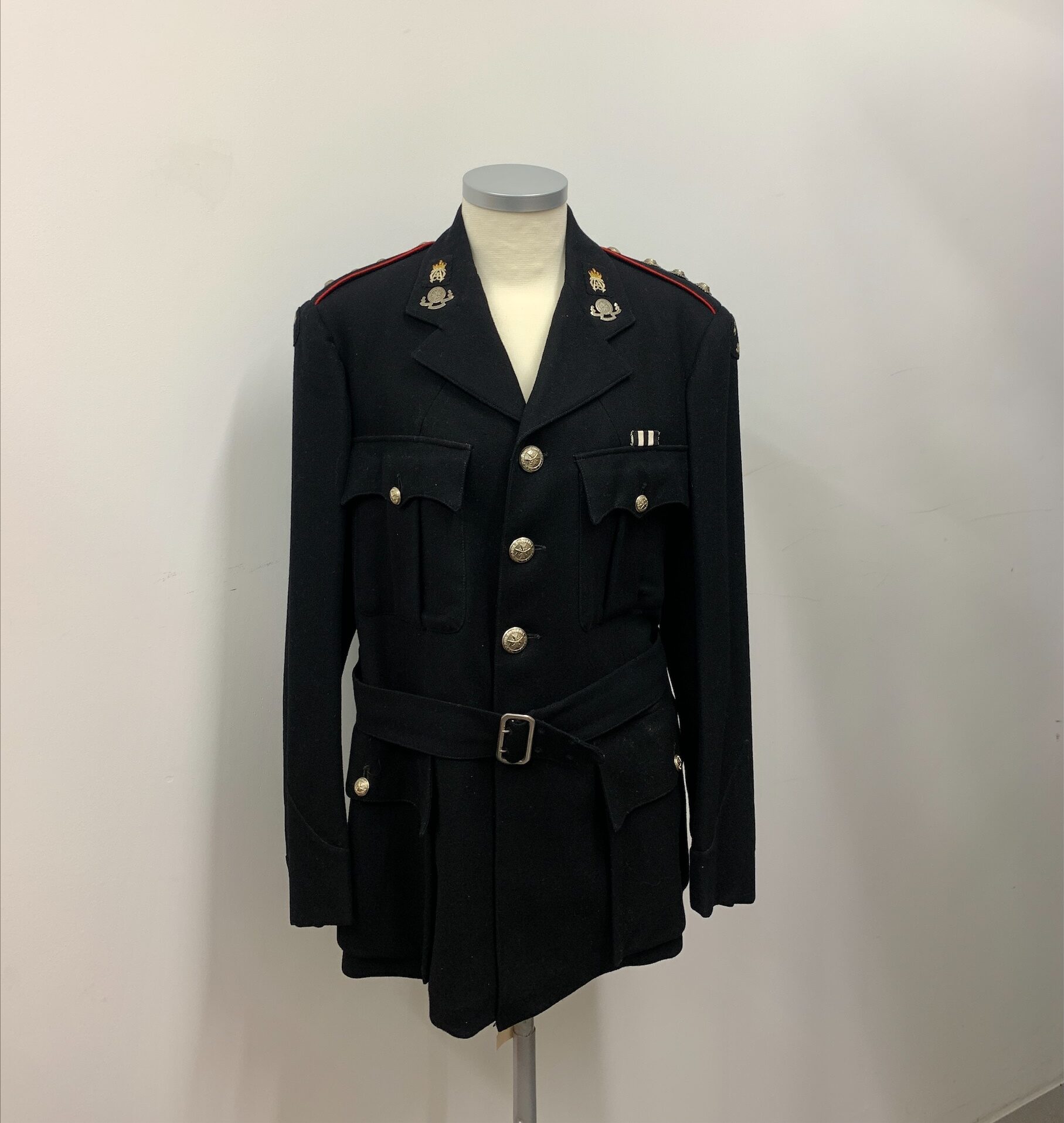 This is a black flannel single breasted St. John's Ambulance jacket for a female. The epaulettes are piped red with silver St. John's buttons. Cotton badges are stitched onto the collar on each side. On the top of the sleeves are black badges, with 'St. John's Surrey' and the St. John's cross stitched on. There is a belt with a white medal buckle attached around the waist.
This is a black flannel single breasted St. John's Ambulance jacket for a female. The epaulettes are piped red with silver St. John's buttons. Cotton badges are stitched onto the collar on each side. On the top of the sleeves are black badges, with 'St. John's Surrey' and the St. John's cross stitched on. There is a belt with a white medal buckle attached around the waist.
St. John’s Ambulance has a long history. The organisation has been offering its services for more than 140 years, and it may even be traced back to the 11th century. The modern Order of St. John in England began to identify the need for public First Aid and ambulance transport services, which weren’t yet organised, around 1888.
The Order of St. John is still active today as a global organisation that supports initiatives in over 40 nations. St. John’s Ambulance volunteers provide first aid in local neighbourhoods and assist the NHS in responding to 999 calls.
The Weybridge division of St. John’s Ambulance
This local division was formed in Weybridge in May 1939, just months prior to the outbreak of the Second World War. It was unique because it was the only division in Surrey to have a response boat. As a totally self-sufficient branch, it received no financial help from the local authority and most of its members were volunteers. The Weybridge division was active throughout big and small events, and their aim was to keep patients alive until the professionals arrived.
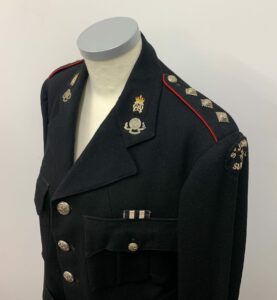
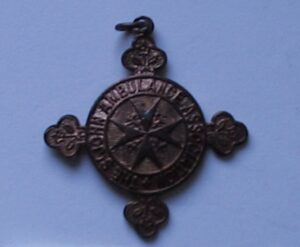
Bronze round uniface St John Ambulance Association medal.
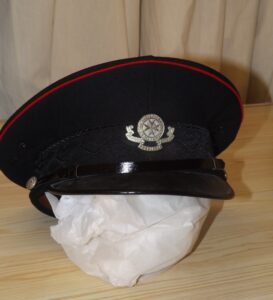
The Mill buildings were located between Esher and Hersham stations, and had a long and significant history as a site used for the manufacture of brass wire and associated merchandise in the 17th and 18th centuries. The first record of the existence of the Mills was in 1199-1200, and they eventually turned into a commercial space for enterprise later in the 18th century.
Following a series of different owners, in 1691 the Dockwra company bought the Mill buildings, making about 80 tons of brass each year – about half of England’s total annual output. It also produced large quantities of brass wire and pins, an enterprise continued by successive owners, eventually becoming a paper mill. The new set-up included pulp-beating machines, rag-tearing machines, and a large reservoir, employing around 200 people to run the site. However, sadly this also marked the start of the site’s long history of devastating fires. A huge fire was first recorded in 1853, just 2 days before Christmas, costing the company £100,000. Later, in the 1860s, another fire saw the site badly burned, and then again in 1877, by which point the Mills were being used for the manufacture of linoleum. However, a fire again in the 1890s was larger and saw the end of the Esher Mills’ use manufacturing linoleum.
In 1902, the Mills were sold to James Burn, becoming James Burn & Co. and returning to their long-time use as a paper mill. Sadly, more trouble came on 14th January 1908, when a severe fire burnt the whole building. The image from a postcard in Elmbridge Museum’s collection shows the burning fire and the loss of the roof structure. Just 5 years later, in 1913, a serious strike happened at the factory. Both incidents contributed to the end of James Burn & Co.
Learn more about the Mill's history in G.B. Greenwood's article for Esher District Local History Society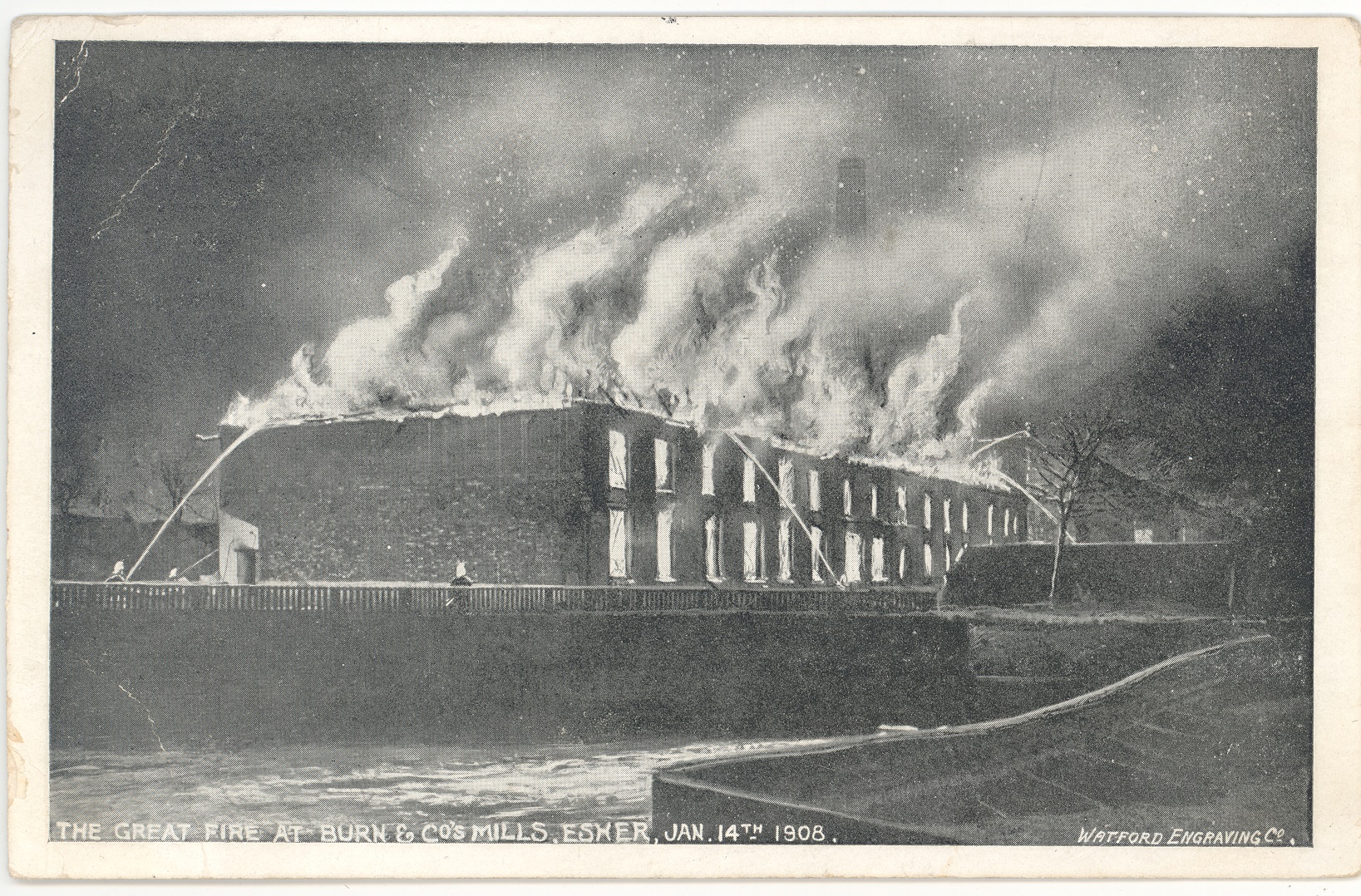
Kitty Marion’s attack on Hurst Park was part of the fight for women’s voting rights.
The trouble was begun at the Epsom Derby horseraces when, on 4th June 1913, Emily Wilding Davison ran out in front of the King’s horse and died of her injuries a few days later. Emily had been protesting for women’s voting rights in England, and was the first woman involved in the movement to die as a result of violence linked to the cause.
Kitty Marion was a radical Suffragette who supported the WSPU’s campaign of violent demonstrations in order to force the government to give women the vote. Upon news Emily Wilding Davison’s tragic death, the WSPU decided that retaliation was necessary. On the evening of Emily’s death, 8th June 1913, Kitty Marion set out to Hurst Park Racecourse in Molesey with a gallon of oil, fire lighters, and her accomplice Clara Giveen. The fire spread more quickly than they had anticipated, taking 5 local fire crews to extinguish it and costing £7000 to repair after the grandstand, kitchens and dining rooms were completely destroyed. Marion and Giveen were quickly apprehended and, a few days after being detained by the local police, both were arrested and given a three-year prison sentence.
Learn more about Kitty Marion in our “Everyday Heroines” exhibition!
Visit the online exhibition
Mount Felix War Hospital was a place of historical significance. Originally constructed as a mansion house in the early 1700s, it was converted into a hospital for the Australian and New Zealand Army Corps soldiers in 1915, during the First World War. Many patients were treated during the war at Mount Felix War Hospital and other military hospitals nearby.
After the First World War, Mount Felix was given back to its original owner, and was subsequently sold to several families. Later on, the grand ballroom was used once more when the Second World War started in 1939. It served as a mortuary for victims who died in enemy bombing raids from 1940, and families came to Mount Felix to identify their bodies.
Mount Felix was once more available for regular use after the Second World War, mostly for small businesses and various shows. In June 1966, a serious fire broke out in the building and the stately home was severely damaged. This led to the building’s demolition in 1967. In 1969, the stables – the only surviving part of the original structure – were converted into residences and offices.
Learn more about the history of Mount Felix in our “The Mount Felix War Hospital” exhibition!
Visit the online exhibition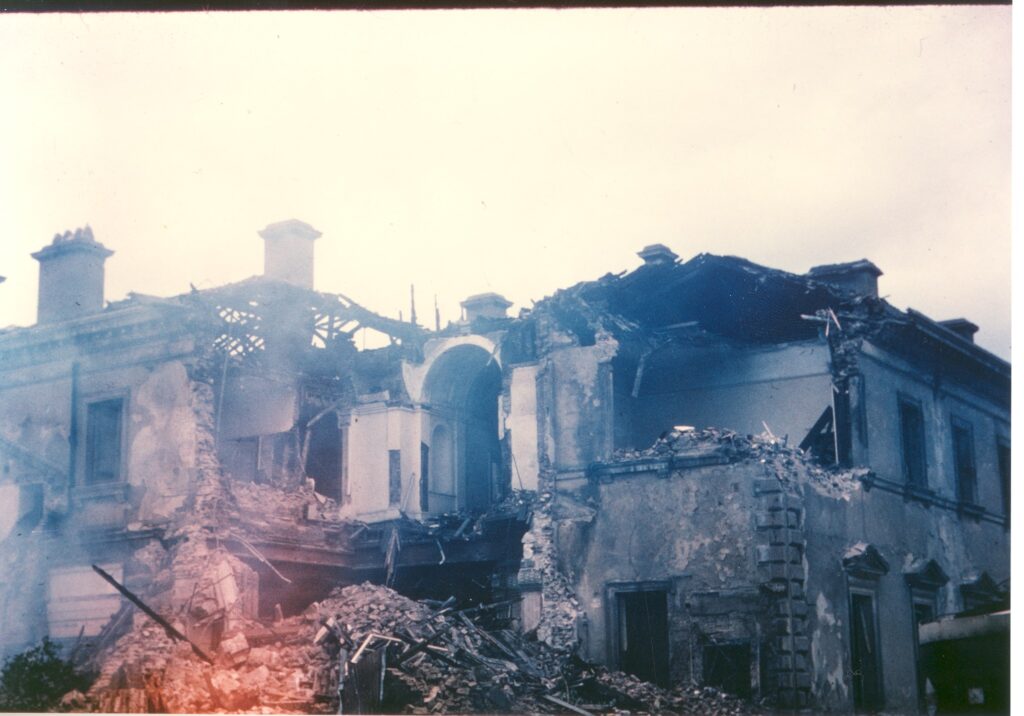 Photograph of Mount Felix during demolition, 1967. The main part of the house can be seen with the near corner demolished, exposing parts of rooms and an arched passageway.
Photograph of Mount Felix during demolition, 1967. The main part of the house can be seen with the near corner demolished, exposing parts of rooms and an arched passageway.
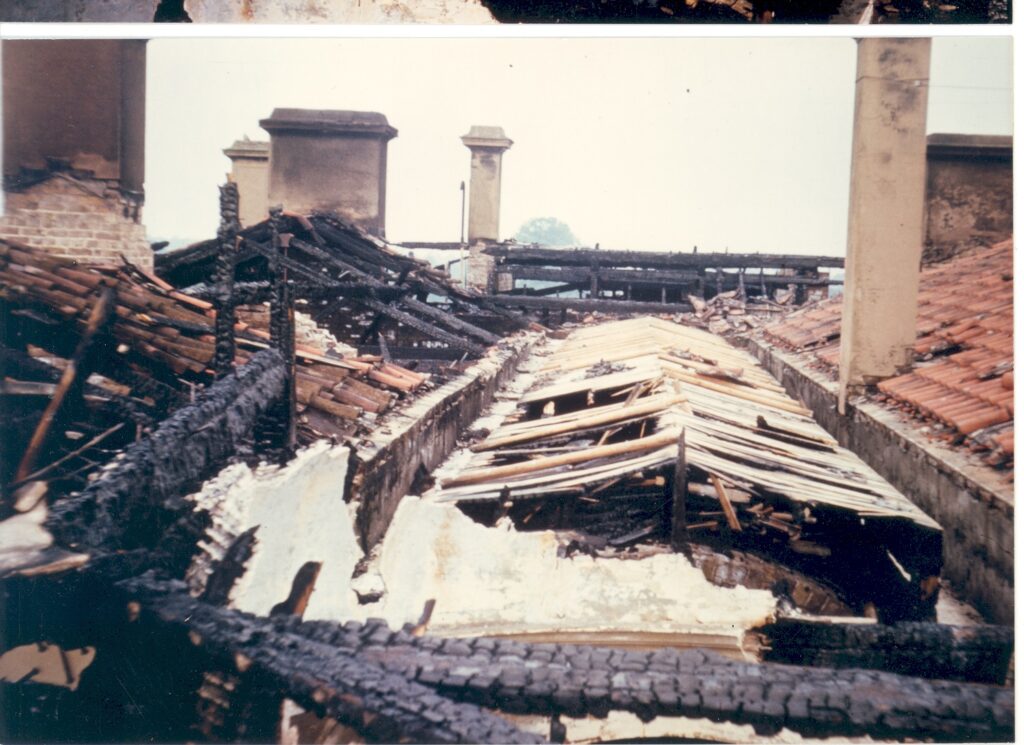 Photograph of the burnt out roof of Mount Felix, taken after the fire in 1966.
Photograph of the burnt out roof of Mount Felix, taken after the fire in 1966.
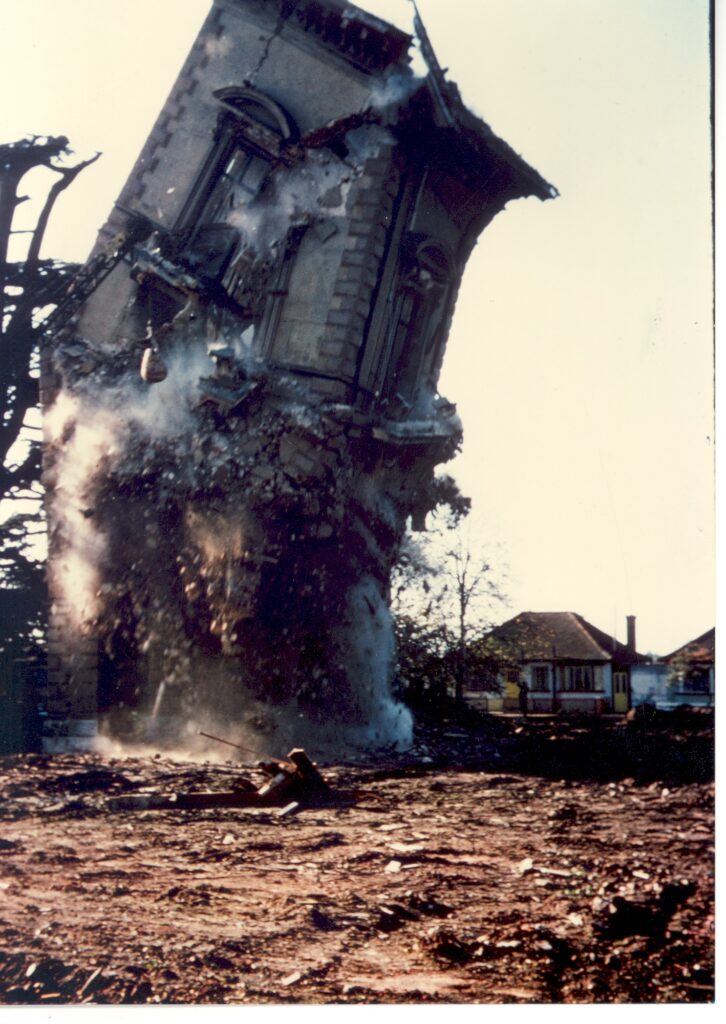 Photograph of the tower of Mount Felix falling during demolition, 1967. The top the crane arm is just visible in front on the left.
Photograph of the tower of Mount Felix falling during demolition, 1967. The top the crane arm is just visible in front on the left.
The Great Flood in 1968 was possibly the most severe inland flood in a century. Throughout the course of the flood, 25,000 homes were damaged by water, and the flood at its peak covered around one-sixth of Surrey.
Six road and rail bridges collapsed as a result of the water damage to them, and had to be rebuilt, with other bridges facing closure due to unsafe conditions. In 1968, traffic was not as heavy as it is today, but the floods still caused problems for road users, with most of the main roads travelling out of London to the south and west blocked for 24 hours or more. Farming, then even more prominent across the area than it is now, was also heavily impacted, with many crops lost or badly damaged and local farmers losing considerable income.
Surrey was the most heavily affected county, with many thousands of properties and businesses affected.
Learn more about the 1968 flood here.
Read about other extreme weather events in our “Climate Change” exhibition!
Visit the online exhibition Colour photograph of Walton Road, Molesey, 1968, showing on the left a row of shops with flood water several inches high.
Colour photograph of Walton Road, Molesey, 1968, showing on the left a row of shops with flood water several inches high.
 Image of Hampton Court Way in the Great Flood. A police officer stands on a platform preventing other traffic from approaching. The No. 206 Claygate Bus is shown in flood water on the junction of Hampton Court Way and Summer Road, East Molesey, September 1968.
Image of Hampton Court Way in the Great Flood. A police officer stands on a platform preventing other traffic from approaching. The No. 206 Claygate Bus is shown in flood water on the junction of Hampton Court Way and Summer Road, East Molesey, September 1968.
The Great Storm struck overnight between the 15-16th October 1987. It was particularly devastating, because of its hurricane-force winds that hit primarily the South East region of England and northern coast of France.
Part of what made the storm’s impact so large was that people had not been prepared for it, with the Met Office anticipating that it would be much less severe than it turned out to be. After the storm struck, roads and railway tracks were blocked by fallen trees, buildings were damaged, windows were broken and roofs torn apart. Falling trees and debris also caused damage to power lines, and power was lost to several thousands of people. It took more than two weeks to get these areas fully back on the grid. Schools were largely closed across the affected areas, and the storm even caused some injuries and fatalities.
The local area of Elmbridge did not escape the effects of the Great Storm. In the Museum collection, there are many example photographs of damage caused across the local area, taken in the morning of the 16th October after the worst of the winds had passed on.
Learn more about the Great Storm in 1987 in our “Climate Change” exhibition!
Visit the online exhibition Photograph taken from Downside Bridge, Cobham, the morning after the Great Storm of 1987. Looking south along River Mole, with flooded fields beyond the hedge bordering the river bank.
Photograph taken from Downside Bridge, Cobham, the morning after the Great Storm of 1987. Looking south along River Mole, with flooded fields beyond the hedge bordering the river bank.
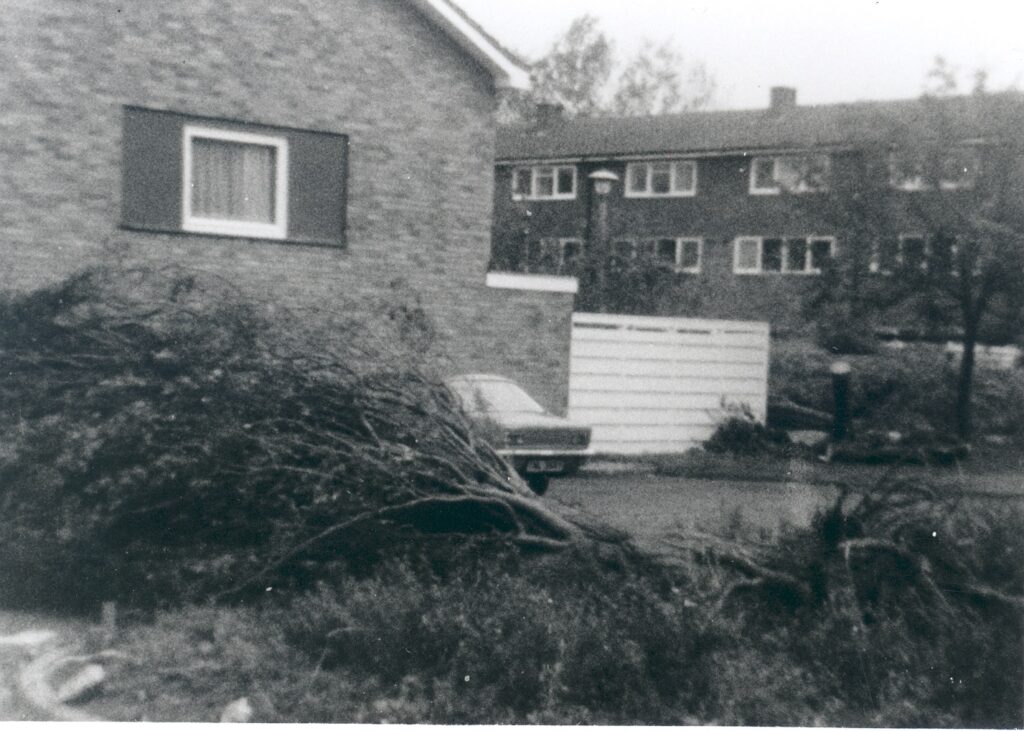 Photograph taken at the Hurst Park Estate, East Molesey, after the Great Storm in October 1987. The image shows a fallen tree.
Photograph taken at the Hurst Park Estate, East Molesey, after the Great Storm in October 1987. The image shows a fallen tree.
“There was nothing we could do but watch, we stayed up all night with my son sat at the top of the stairs wondering how far it [the water] would rise.” – Deakin
“Later on a police cadet team arrived to help……and life gradually returned to normal.” – Peter Dolby
From the past to the present, the emergency services have played a prominent role in local life. Aside from natural disasters, the Second World War presented arguably the most significant and defining moment in the history of British emergency services. With nightly bombing raids during the Blitz, the War brought danger and destruction into everyday life, and therefore hugely expanded the scope of the emergency services. In this section, different emergency services which emerged during war time will be introduced.
To learn more about the war time in Elmbridge, visit our “Elmbridge at War” exhibition.
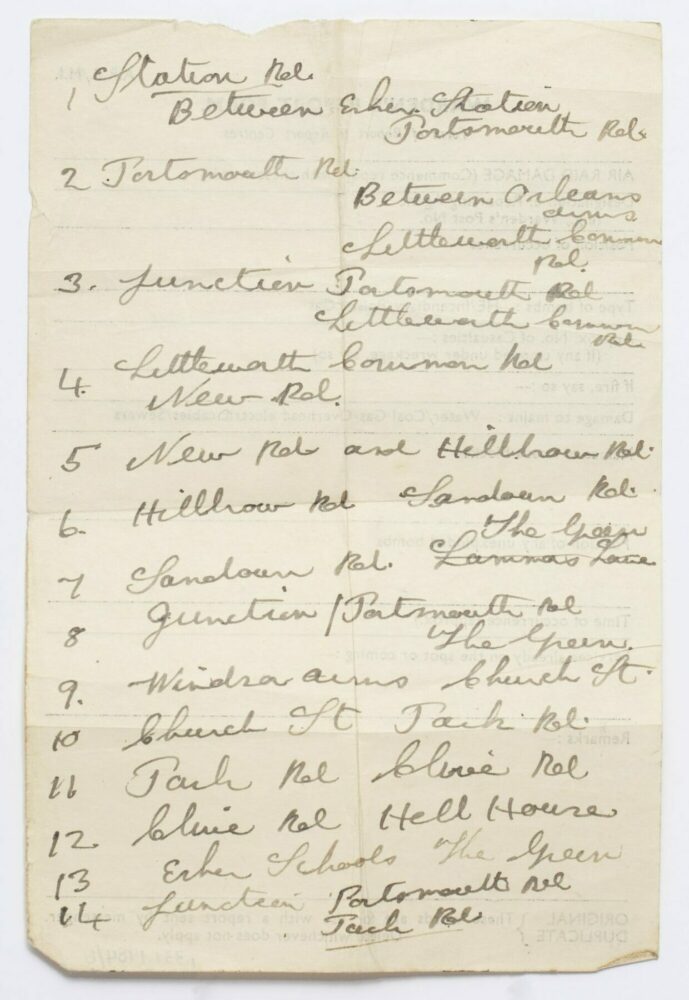 The back-side of an A.R.P. Warden's Report form, with hand-written notes by ARP warden Alfred C. Cornwell, giving details of different places within his area of Esher.
The back-side of an A.R.P. Warden's Report form, with hand-written notes by ARP warden Alfred C. Cornwell, giving details of different places within his area of Esher.
Starting from the Second World War in 1939, everyone was recorded under the national identification scheme, and issued with a national identity card that needed to be carried at all times (until 1952). The museum holds Mr. Alfred C. Cornwell’s National Registration Identity Card and his Air Raid Warden Identification card in its collection. Mr. Cornwell was appointed as an ARP warden on 29th September 1938.
On the reverse side of one of Alfred’s surviving ARP Warden’s Report Form are extensive notes in his handwriting. It shows his records of some of the areas he covered as a warden in Esher.
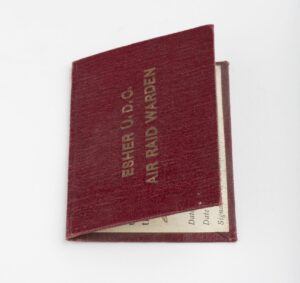
Esher U.D.C. Air Raid Precautions Air Raid Warden Identification card. This was issued to Mr. A.C. Cornwell of Park Road, Esher. It is dated 9th January 1939, with Cornwell haveing been appointed a warden on 29th September 1938.

National Registration Identity Card issued to Alfred C. Cornwell of Park Road, Esher. The card holds a description of the holder and his capacity within the Civil Defence. It is dated 17th May 1943.
This map for Littleworth Road, New Road, and the surrounding areas in Esher, was used during the Second World War by Air Raid Wardens in the area. The map is drawn in pencil and coloured, and gives information in a key in the bottom left corner about the various items shown on the map. These include A.R.P. points, fire hydrants, fire plugs, fire alarm posts, doctors, and static water.
Have a closer look at the A.R.P map here.
The Second World War was a significant event which led to the emergence of the modern emergency services as we know them today. Discover more through our 'Elmbridge at War' online exhibition, which presents the varied history of the borough in wartime, with oral testimonies from local people.
Visit Elmbridge At War
Leave a comment!
We would love to hear your thoughts on 'Silent Services in Action', or your memories of your local emergency services.You need to be logged in to comment.
Go to login / register